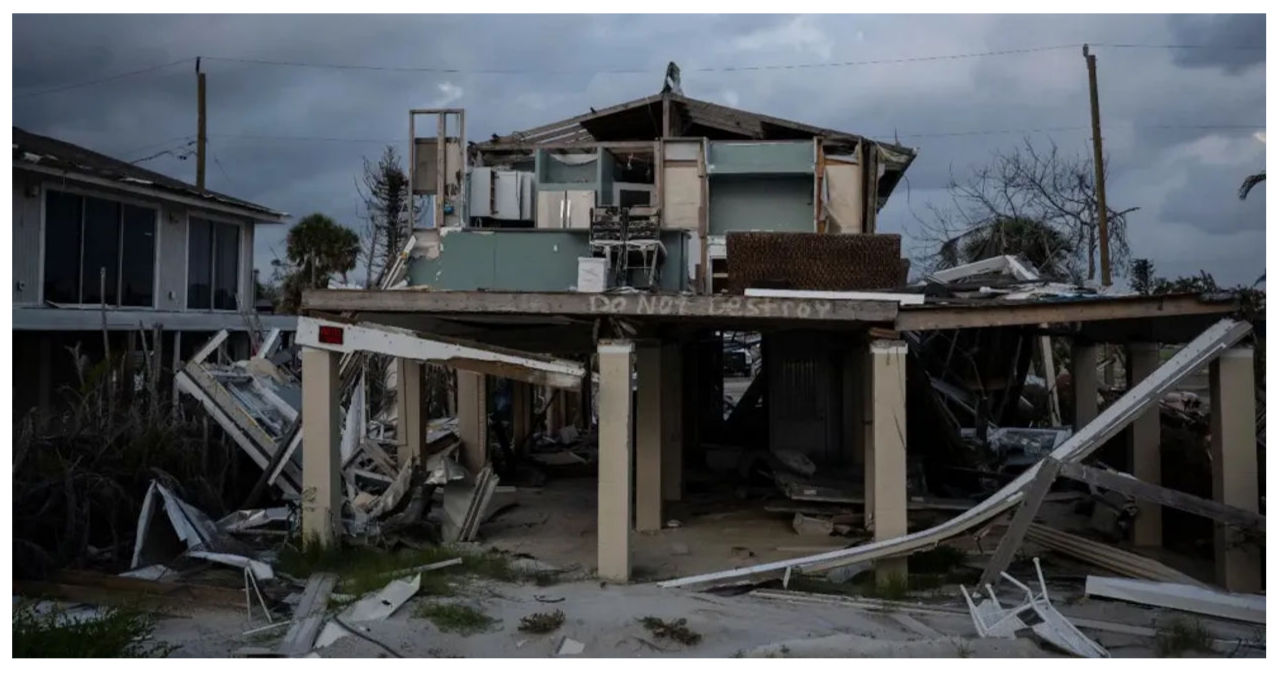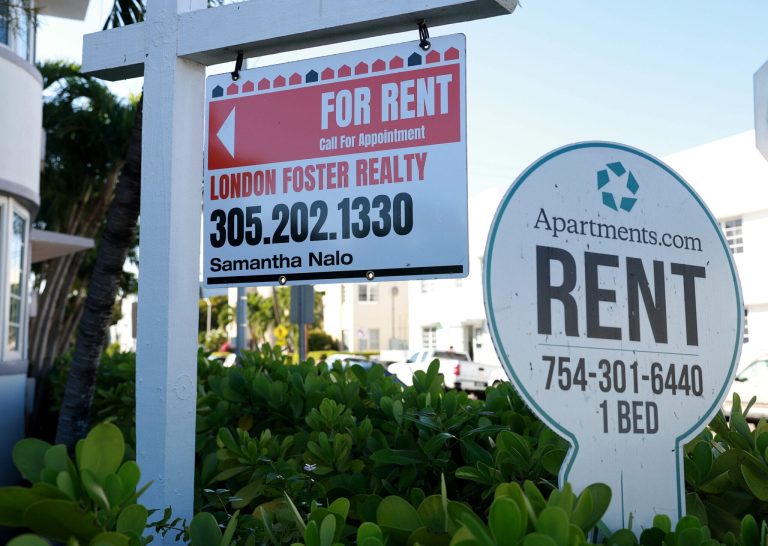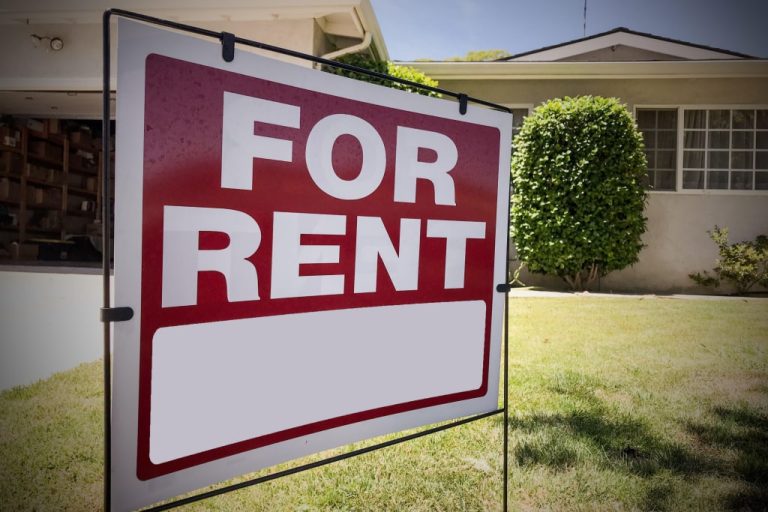This story was first published by Grist and is being shared here as part of the Climate Desk collaboration.
When homeowners in the US purchase subsidized flood insurance from the Federal Emergency Management Agency (FEMA), they are pledging to rebuild stronger after flood disasters, even if it comes at a cost. FEMA’s well-known 50 percent rule dictates that if a home in a flood zone incurs damages exceeding half its value, it must be demolished and reconstructed at an elevated level above flood levels. While this can be a significant financial burden for homeowners, it serves as a preventive measure to avoid the continuous burden on the American public due to the repeated destruction of vulnerable homes, at least in theory.
Local officials in flood-damaged regions play a crucial role in enforcing the 50 percent rule. It is their responsibility to ensure that their constituents do not rebuild in flood zones. In return for their diligence, the federal government provides low-cost flood insurance for homes in communities that certify their compliance with the rule. This arrangement has boosted real estate markets in Florida and other scenic yet climate-threatened areas.
Florida is currently in the process of recovering from the destructive Hurricane Ian of 2022. However, it appears that the Biden administration is indicating a shift away from the previous era of readily available funding. In a recent letter, FEMA addressed local officials in Lee County, Florida, home to over 750,000 residents and located near highly valued coastal areas in South Florida. The letter stated that nearly 600 homeowners in Cape Coral and neighboring towns had violated both the 50 percent rule and local construction laws by rebuilding vulnerable homes in the flood zone within the past 18 months since Hurricane Ian.
The county and its cities had been enjoying a 25 percent discount on flood insurance for a long time, thanks to the county’s effective measures to mitigate flood risk. This discount had saved residents millions of dollars annually. However, a letter was received warning that this discount could be revoked due to the county’s inadequate response to the Hurricane Ian rebuild. The federal government made it clear that they were no longer willing to tolerate decades of risky construction in floodplains.
The recent initiative to impose penalties on building in floodplains is a clear indication that homeowners in coastal states are finally facing the financial consequences of climate change and development. This comes at a time when housing costs are already on the rise for many Americans. In response to the increasing risk, FEMA has raised flood insurance premiums nationwide, while private home insurance companies have also raised premiums for wind insurance in various Gulf Coast states.
The crackdown in Lee County is an effort by FEMA to transfer the financial responsibility of climate risk from the federal government and taxpayers to local homeowners. This move could have significant implications for the booming real estate market in the area, potentially leading many homeowners to abandon their waterfront properties. As the federal government and private insurers seek to limit their exposure to climate change, the situation in Lee County and its cities could serve as an early warning for a housing market that is increasingly affected by the growing threat of flooding.
The response from these canaries has been immediate and intense. County and city officials have criticized FEMA as “villains” and claimed that the agency is impeding Florida’s hurricane recovery under the influence of President Joe Biden. Following the announcement, the board of commissioners in Lee County considered taking legal action against the agency during a tense meeting. Numerous local TV stations aired reports highlighting the consequences of FEMA’s decision on homeowners, who are already grappling with soaring flood insurance and traditional property insurance rates, which include coverage for wind damage.
During the county meeting after the announcement, Cecil Pendergrass, a Lee County commissioner, expressed his frustration by stating, “It’s almost like revenge politics. Our citizens, our taxpayers are being held hostage here.”
FEMA quickly halted its decision, granting the county an additional 30 days to demonstrate that it had not allowed homeowners to violate the 50 percent rule or construct in flood-prone areas. The ability of Lee County and cities like Cape Coral to meet this requirement remains uncertain. Both federal and local officials declined to disclose specific information regarding post-hurricane Ian violations due to privacy concerns. However, if homeowners have already reconstructed their damaged properties, the county will be unable to rectify the situation within the given timeframe.
Communities across the country are grappling with a pressing question: is FEMA altering its approach to enforcing the 50 percent rule with the intention of displacing homeowners living in flood-prone areas?
“The floodplain management community is closely monitoring this situation,” explained Susanna Pho, the founder of Forerunner, a flood risk firm that assists flood-prone communities in meeting FEMA compliance.”
Lee County has always been known for its risky waterfront development. Cape Coral, a city located on artificial filled land in a once swampy area of the Florida shoreline, is particularly vulnerable. There is no natural barrier between the city’s urban landscape and the Gulf of Mexico. When hurricanes like Ian hit, as was the case in 2022, they can bring as much as 15 feet of storm surge, causing extensive flooding and damaging thousands of homes. Even neighboring cities like Bonita Springs, which faced penalties from FEMA, are not much safer.
The 50 percent rule aims to mitigate this risk by ensuring that homeowners residing in flood-prone areas do not repeatedly rebuild vulnerable properties. When a home is determined to have experienced “substantial damage” by FEMA, the county is obligated to require the homeowner to demolish the property and construct a new one above flood level, often using concrete pilings. Non-compliance with this rule can result in FEMA excluding the county from the federal flood insurance program, making the homes essentially uninsurable. Additionally, FEMA may reduce the discounts provided to the county, as was the case with Lee County. This rule effectively acts as a tax on high-risk properties since flood insurance payouts are limited to $250,000 per home. Consequently, homeowners often bear the cost of demolishing their houses and constructing new ones.
Determining what qualifies as “substantial damage” can be a complex task. In the aftermath of a storm, local officials typically conduct initial assessments from the street, noting visible damage as they clear debris. Detailed examinations are only performed when homeowners seek permits to rebuild, following the 50 percent rule. However, not all homeowners request permits from their city or county. Instead, they opt to patch up their homes instead of tearing them down and constructing them at higher elevations. In some cases, local governments are unaware of these actions or choose to turn a blind eye.
President Biden made a visit to Fort Myers, Florida, following Hurricane Ian in 2022.
Local governments find themselves in a challenging political predicament due to this requirement. On one side, FEMA is pressuring them to enforce rigorous flood regulations, while on the other side, displaced homeowners are desperately trying to return to their homes without facing financial ruin. The extent of Lee County and its cities’ knowledge regarding the numerous homes that FEMA claims were noncompliant after Hurricane Ian remains uncertain. However, attempts to circumvent the 50 percent rule have plagued the agency for many years.
According to Albert Slap, a coastal planning consultant in Florida, he recognizes the reasons why Lee County or cities like Cape Coral might have permitted homeowners to repair their homes without raising them.
“It’s evident that the driving force behind this decision is the voters,” he explained. “The individuals who have been adversely affected are the voters themselves. They are expressing their concerns, saying, ‘If you insist on rebuilding and improving, I won’t have the means to do so, and I may have to relocate. I supported your candidacy, and now I feel let down.'”
After Hurricane Ian, Lee County followed its usual protocol by conducting initial damage assessments and inspecting homes upon homeowners’ permit requests. This protocol is commonly practiced in Florida and other hurricane-prone states. Experts in flood and disaster management have questioned whether FEMA is implementing stricter enforcement of the 50 percent rule and cracking down on unauthorized reconstruction projects.
FEMA did not provide any information regarding its enforcement strategy. When asked by Grist, a spokesperson stated that the agency is dedicated to assisting communities in taking the necessary steps to address and rectify the violations in their rebuilding efforts. Similarly, a spokesperson for Lee County mentioned that the county will collaborate with FEMA during a 30-day extension period to address the situation.
Republican state representative, Adam Botana, expressed his confidence in Lee County and other local governments to address the violations identified by FEMA. He believes that necessary actions will be taken against homeowners who have rebuilt without adhering to FEMA regulations.
In an interview with Grist, he expressed his understanding of the need for rules, even though the 50 percent rule is not liked by anyone. He acknowledged that some municipalities may have more lenient enforcement, but emphasized the importance of maintaining consistency. Furthermore, he expressed confidence in the county’s ability to demonstrate that many of the reported violations did not occur.
Lee County’s potential contestation of the decision may not provide much relief for homeowners in Southwest Florida. The enforcement effort is likely to result in further financial burden for them. Should FEMA proceed with removing the discount, flood insurance expenses for homeowners residing in unincorporated areas of the county will surge by $14 to $17 million annually. Consequently, each flood insurance customer in the region will have to bear an additional $300 expense each year. However, if Lee County takes a stricter stance on the 50 percent rule and FEMA reinstates the discount, homeowners who reconstructed their properties in flood-prone zones may be faced with the daunting task of spending hundreds of thousands of dollars to elevate their homes.
In an effort to address issues with the flood insurance program, FEMA has implemented a series of rate hikes over the past few years. As part of this ongoing initiative, a new penalty has been introduced. Known as Risk Rating 2.0, this system will result in a significant increase in insurance costs for residents of Lee County. Once fully implemented, the average annual premium will triple, soaring from approximately $1,300 to nearly $4,000. Some individuals may even face bills exceeding $10,000 per year. The situation is further exacerbated by the state’s private insurance market for wind damage, which is experiencing a downturn. Within the last two years, over 30 private carriers have withdrawn from Florida, largely due to the escalating risk of hurricanes. The remaining insurers have responded by doubling or even tripling their prices.
Lisa Miller, an experienced Florida political consultant and former state insurance regulator, believes that prioritizing the need for resilient homes in Lee County should not be overshadowed by the increasing costs.
She reminded them that living in Florida comes with a higher catastrophe risk compared to almost anywhere in the world. When people express their unwillingness to pay $12,000 a year, she emphasizes the importance of ensuring that the homes, which were repaired instead of being torn down and rebuilt, can withstand the next storm.



